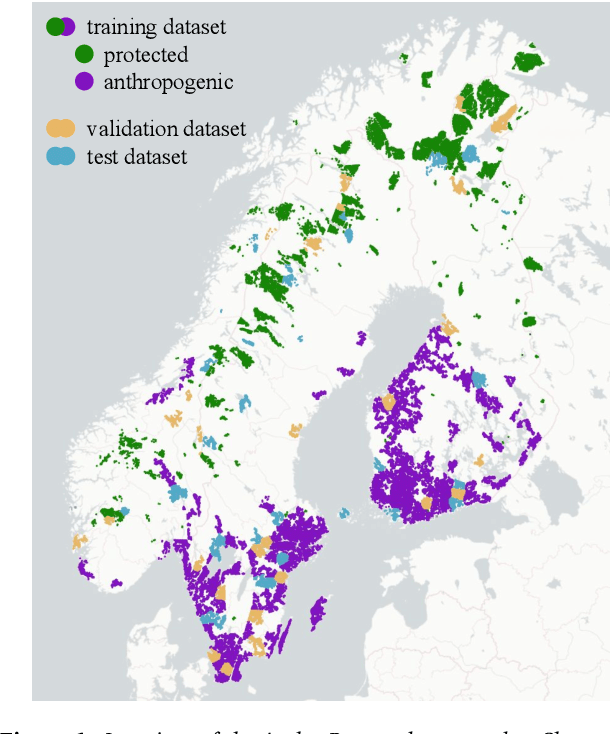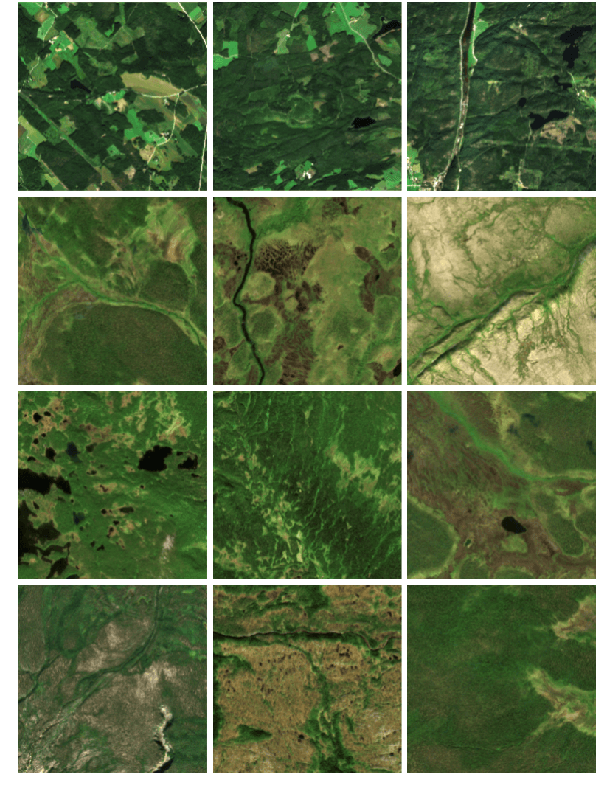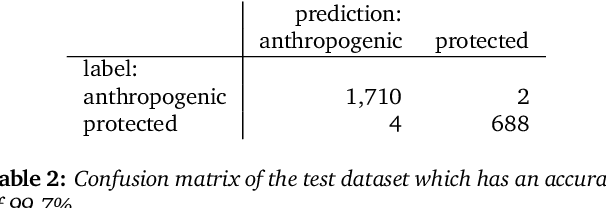Taylor Stone
Exploring Wilderness Using Explainable Machine Learning in Satellite Imagery
Apr 11, 2022



Abstract:Wilderness areas offer important ecological and social benefits and therefore warrant monitoring and preservation. Yet, the characteristics of wilderness are little known, making the detection and monitoring of wilderness areas via remote sensing techniques a challenging task. We explore the appearance and characteristics of the vague concept of wilderness via multispectral satellite imagery. For this, we apply a novel explainable machine learning technique to a dataset consisting of wild and anthropogenic areas in Fennoscandia. With our technique, we predict continuous, detailed, and high-resolution sensitivity maps of unseen remote sensing data for wild and anthropogenic characteristics. Our neural network provides an interpretable activation space in which regions are semantically arranged regarding these characteristics and certain land cover classes. Interpretability increases confidence in the method and allows for new explanations of the investigated concept. Our model advances explainable machine learning for remote sensing, offers opportunities for comprehensive analyses of existing wilderness, and has practical relevance for conservation efforts.
 Add to Chrome
Add to Chrome Add to Firefox
Add to Firefox Add to Edge
Add to Edge